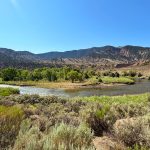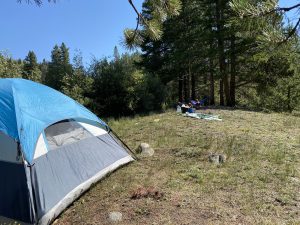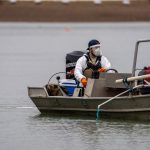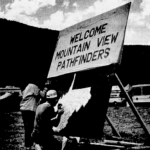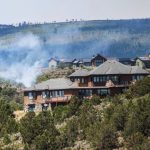Firefighting costs exceed $16 million for Cache Creek and Cabin Lake fires
Rifle Citizen Telegram

Lynn Shore/Special to the Post Independent
RIFLE — Two of northwest Colorado’s bigger and more remote wildfires, the Cabin Lake and Cache Creek fires burning north and south of Rifle, respectively, are on their way to containment after a month-long battle with a variety of firefighting crews.
Meanwhile, the costs to fight those fires, which started a day apart in late July, has mounted.
White River National Forest public information officer Kate Jerman said the cost to date of fighting the two fires, combined, is more than $16 million.
Cabin Lake Fire
For the Cabin Lake fire in southern Rio Blanco County near Buford, the cost to date sat at nearly $10.2 million as of Monday afternoon, Aug. 27. The fire, which began Sunday, July 29, stands at 5,975 acres and the cause is still under investigation.

Support Local Journalism
The Cache Creek fire, burning east of Battlement Mesa was at 2,703 acres, as of Tuesday, Aug. 28, and has cost just more than $6 million to fight, Jerman said. It was started by a lightning strike the evening of Saturday, July 28.
While neither fire is expected to be fully out until October, the numbers indicate just how much money it has cost to fight the fires.
At its peak, the Cache Creek fire had as many as 339 personnel working on the fire at one time on Friday, Aug. 3. A few days later, on Sunday, Aug. 5, 11 engines, eight dozers, six water tenders and four helicopters were used on the fire, the most equipment used at one time.
As of Monday, Aug. 27, the fire was 55 percent contained and had 28 personnel, two engines and two wildland fuel modules, with a helicopter on standby, if needed, said Jerman.
No Structures Lost
Meanwhile, starting Tuesday, a Type 3 Incident Management Team took over the Cabin Lake fire for the Type 2 Team that has been in place for the past couple of weeks.
The fire, which forced evacuations of several homes and seasonal cabins on and near the New Castle-Buford Road at various times after it broke out, still has 235 personnel, one helicopter, four engines and two dozers working the fire lines. It is now 82 percent contained. No structures have been lost.
A total of 552 personnel were fighting the fire at one time on Sunday, Aug. 19, the largest crew used on the fire. In addition, 10 aviation resources, 21 engines and seven dozers were on hand to help on a windy Sunday afternoon.
While a historically hot 2018 summer saw wildfires sprout out across the state, Jerman said local officials have plenty to consider until the next heat wave hits.
“This season we learned that we are not immune on this forest to drought, extreme fuel conditions, extreme fire behavior and big, complex fires,” Jerman said.
She went on to say, “This type of scenario is something we need to continually prepare for, plan for and learn from for the future. The learning and planning process starts now and throughout the whole year in coordination with our partners and our communities.”



